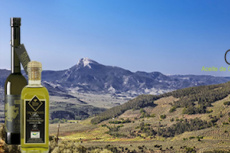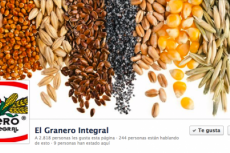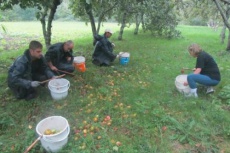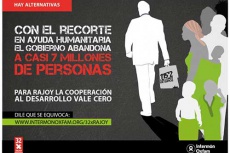Deborah Milner and Aveda Launch ECOTOUR Fashion Collection,

What do you get when you take one part fashion design, one part environmental advocacy and combine it with a bit of beauty industry magic? Probably something that looks a lot like the Deborah Milner EcotureTM collection - a sophisticated line of sustainably crafted couture.
Fashion designer Deborah Milner is on a quest to give high fashion an eco-friendly makeover. "Right now, it is very difficult to find couture quality sustainable textiles and dyes," says Milner. She points out that eco-friendly fabrics exist, but unfortunately most do not meet the exacting standards called for in high fashion design. Like a green building architect engineering new eco-friendly construction materials, Deborah and her team are 'engineering' luxurious textiles that are easy on the planet.
 Fashion Eco-trepreneurDeborah comes by her role as a fashion eco-trepreneur naturally. Although she had a conventional entrance to the field - earning Fashion Degrees from both St. Martin's School of Art and the Royal College of Art - her personal life took her to destinations not typical of young fashion designers, including the Amazonian rainforests of Brazil. When asked what inspired her wanderlust, Deborah said that she had become frustrated with the fashion world; even though she loved the the work itself, she was unhappy with the culture. Looking for more meaning and a deeper sense of accomplishment, Deborah decided to take an extended trip to Brazil.While in Brazil Deborah became a passionate advocate for the people and ecology of the region. Taking a leave of absence from her successful design work (Deborah's designs have been featured in Elle, Vogue, The New Yorker, The Guardian and others), she devoted a year to working on environmental sustainability initiatives to help preserve Brazil's natural areas and indigenous cultures. Deborah discovered that working with village elders was more fulfilling than working with fashion models. "I was trying to figure out what I could do professionally that would keep me involved in the kind of work I had been doing in Brazil," she said. She thought about teaching or working with an aid organization; but staying in couture hadn't occurred to her until a friend pointed out that she could make a real difference by bringing sustainability to the fashion world. It was the perfect advice - even though she'd been disillusioned by the lifestyle, Deborah still had a love of design and a demonstrated talent for couture.
Fashion Eco-trepreneurDeborah comes by her role as a fashion eco-trepreneur naturally. Although she had a conventional entrance to the field - earning Fashion Degrees from both St. Martin's School of Art and the Royal College of Art - her personal life took her to destinations not typical of young fashion designers, including the Amazonian rainforests of Brazil. When asked what inspired her wanderlust, Deborah said that she had become frustrated with the fashion world; even though she loved the the work itself, she was unhappy with the culture. Looking for more meaning and a deeper sense of accomplishment, Deborah decided to take an extended trip to Brazil.While in Brazil Deborah became a passionate advocate for the people and ecology of the region. Taking a leave of absence from her successful design work (Deborah's designs have been featured in Elle, Vogue, The New Yorker, The Guardian and others), she devoted a year to working on environmental sustainability initiatives to help preserve Brazil's natural areas and indigenous cultures. Deborah discovered that working with village elders was more fulfilling than working with fashion models. "I was trying to figure out what I could do professionally that would keep me involved in the kind of work I had been doing in Brazil," she said. She thought about teaching or working with an aid organization; but staying in couture hadn't occurred to her until a friend pointed out that she could make a real difference by bringing sustainability to the fashion world. It was the perfect advice - even though she'd been disillusioned by the lifestyle, Deborah still had a love of design and a demonstrated talent for couture.Minding the GapDeborah began to experiment with clothing designs made from sustainable fabrics and quickly realized that there were limits to what was possible given the dearth of couture quality eco-textiles. Despite the fact that the last several years have seen significant improvements in the quality and availability of eco-friendly clothing made of bamboo, hemp, organic cotton and post-consumer downcycled (PCD) textiles, advances in high-fashion quality fabric haven't been as forthcoming. The standards for couture are extremely high - demanding that every sway of silk and drape of damask is perfect, not to mention that colors must be both vibrant and diverse. It isn't impossible to craft these materials from eco-friendly fibers and dyes, but filling the gap requires a lot of research and experimentation, both of which require fortitude and, of course, funding.
Deborah knew that to succeed in her new role as eco-trepreneur, she would need to find a partner that could support the research and development of this new class of sustainable fabrics. A natural fit for their mission to set an example for environmental leadership and responsibility, Aveda enthusiastically joined the collaboration. With the salon and body care company's help, Deborah set out to design and build gowns made from couture quality sustainable materials. Her creativity and knack for finding textile experts willing to help with the process produced success and last fall at Aveda's biannual Congress fashion show, Deborah debuted the new Ecoture collection.
The DressesOne of these textile experts is the Italian silk manufacturer Mantero, maker of luxurious ties (and the exclusive maker of Chanel scarves). The "Yawanawa Dress" (named for Brazil's Yawanawa tribe, inspiration for the intricate design embroidered on the dress) was created using silk duchess satin from recycled tie stock left over from a production run. Because end lot fabric is not a reliable source of sustainable product (it is obviously in the maker's best interest to have as little left over as possible), Deborah and Mantero are working together to develop a process for crafting eco-friendly silk.
Like the Yawanawa gown, each dress in the collection has a story and lesson for sustainability. The "Sandalwood Dress" (pictured at top) was created using silk chiffon crafted by a women's cooperative in India. "They do incredible work" said Deborah "we are very fortunate to have found this source." The belt, designed by Deborah's colleague Karen Spurgin, is hand crafted from sustainably harvested Australian sandalwood, a material of special significance to Aveda (the company is leading the effort to help aboriginal communities build a sustainable system for collecting and selling sandalwood oil). The brilliant ochre, red and orange of the dress was achieved using natural dyes made from tree resins such as fustic and madder.The white lace used to craft the "Bridal Lace Dress" is made from melted plastic bags. The lace was created using Japanese shibori technique. After tying small knots in white plastic bags, the pieces were hot-ironed between tracing paper. This melted the plastic into "lace," which was then mounted on silk tulle and appliquéd. Recycled nylon forms the netting of the underskirt and Swarovski crystals give the dress an elegant finish. Ironing and melting the bags "started as an experiment, but the results were much better than I had expected," said Deborah.
One of the greatest challenges to crafting sustainable couture is the lack of high quality, high intensity dyes. Couture often calls for vivid colors, but many of the natural dyes can't provide the same intensity as synthetic colors. The beautiful blue of the "Small Knot Dress" was created using tree resin extracts and leaf dyes to make the natural color used to tie-dye the gown's silk organza. Deborah is working closely with Karen and Penny Walsh to discover new ways to brighten the palette of sustainable colors.
Deborah and Aveda plan to launch the collection for the public this summer in either London or Rome.
In addition to Ecoture - Aveda has another green fashion project underway with "Handbags for the Earth." The eco-chic Project Alabama handbags are made from recycled t-shirts and hand-stitched by local artisans in Alabama. The celebrity-decorated & signed bags will be auctioned on eBay June 5-15, 2006. One hundred per cent of the profits will go to the Natural Resources Defense Council. Celeb handbag graffiti contributed by:
That 70's Show cast, Jessica Alba, Kirsten Dunst, Naomi Watts, Desperate Housewives cast, The O.C. cast, Will & Grace cast, Avril Lavigne, Eva La Rue, Susan Sarandon, J. Alexander, Brenda Song, Candi Milos, Davida Sullivan, Tera Patrick, Keshia Knight, Ashley Tisdale, Ely Guerra, Luis Alberto Cueva, Los Nocheros, Anjelica Huston, Natalia Baron, Heatherette, Marco De la Cruz, Antoinnette Beenders, Sophia Milos, Jay Manuel, Niki Taylor, Jamie-Lynn Sigler, Aleks Syntek, Bebe, Bryce Johnson, Ellen DeGeneres, Cedella Marley, Lisa Edelstein, Alan Cumming, Mya, Vanessa Minnillo, Amber Valletta, Virginia Madsen, LeAnn Rimes, One Tree Hill cast, Omarion, Marques Houston, Michael Salgado, Stacy Keibler, Carmen Electra, The Whitford Family.









Añadir nuevo comentario